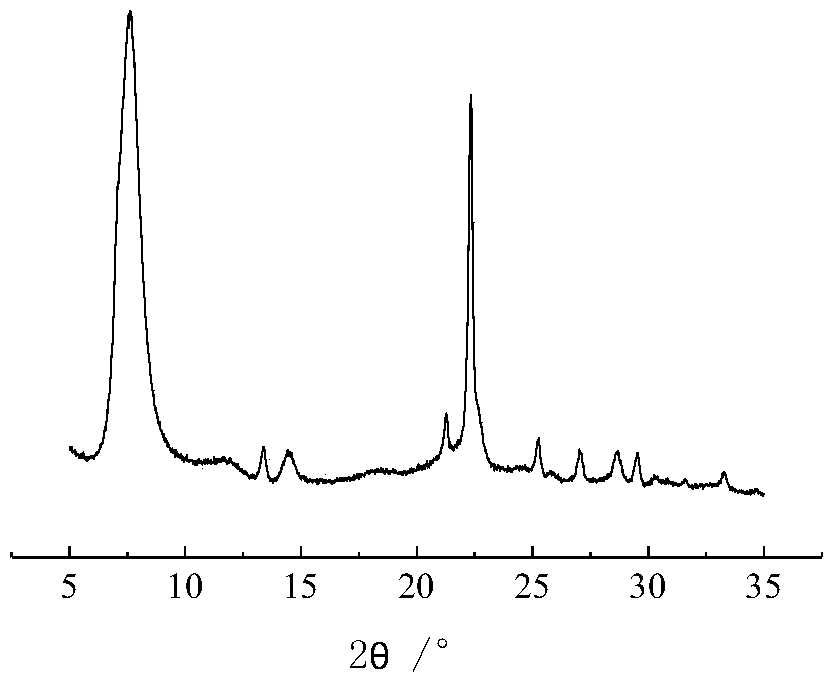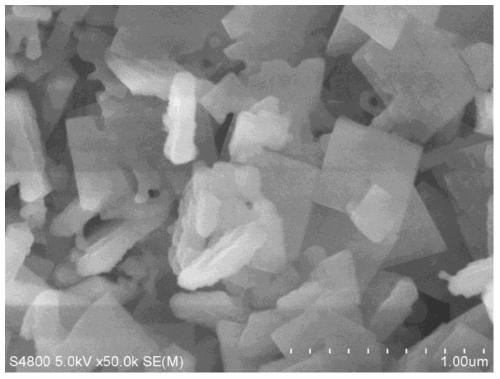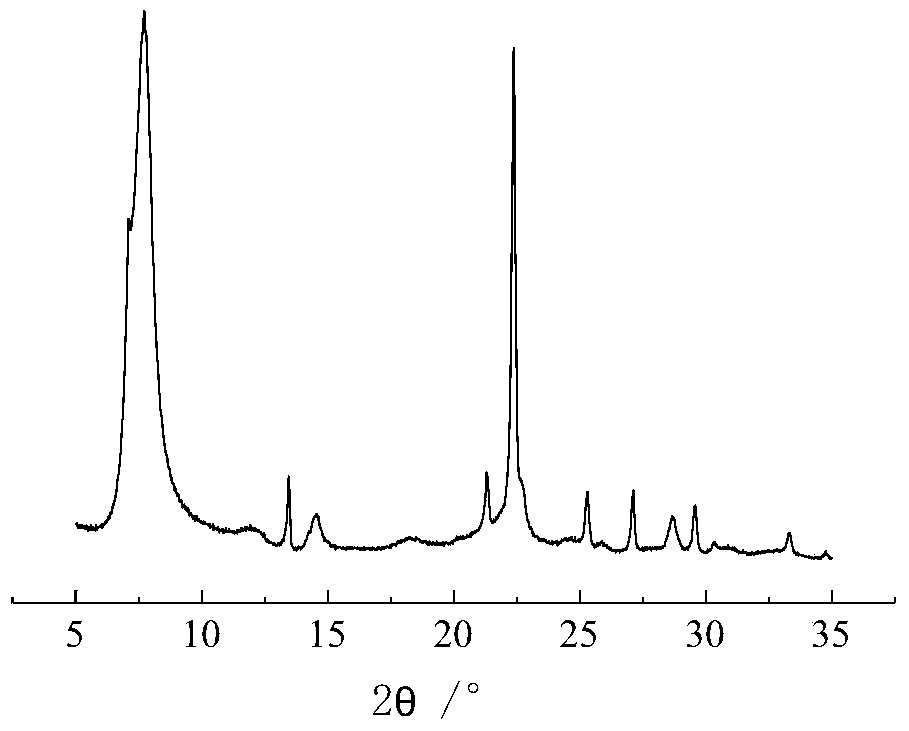A kind of ti-beta molecular sieve and its synthetic method and application
A molecular sieve and seed crystal technology, applied in the field of Ti-beta molecular sieve and its synthesis, can solve the problems of large particle size, aluminum removal, and long molecular sieve crystallization time.
- Summary
- Abstract
- Description
- Claims
- Application Information
AI Technical Summary
Problems solved by technology
Method used
Image
Examples
Embodiment 1
[0062] Under stirring conditions, mix ethyl orthosilicate, tetrabutyl titanate, all-silicon β molecular sieve seed crystals, tetraethylammonium hydroxide and deionized water at 60°C to obtain a molar ratio of SiO 2 :TiO 2 : Seed crystal: Structure directing agent: H 2 O=1:0.03:0.8:1.3:20 alkaline mixed solution, and then press the mineralizer: SiO 2 =0.8 molar ratio, add sodium fluoride to the above mixed solution and stir to obtain OH - :SiO 2 About 1.3 Ti-β molecular sieve precursor.
[0063] After transferring the colloid to a pressure-resistant closed reactor, under agitation, the crystallization system was heated to 135°C and kept at a constant temperature under autogenous pressure for 10 days to obtain a mixture of crystalline products; this mixture was filtered and washed with water. After all; drying at a temperature of 110°C for 6 hours and then roasting at a temperature of 550°C for 5 hours to obtain Ti-β molecular sieve. The XRD spectrum of the molecular sieve is as fol...
Embodiment 2
[0065] Under stirring conditions, mix methyl orthosilicate, tetrapropyl titanate, all-silicon β molecular sieve seed crystals, diethylamine, deionized water, and external alkali source ammonia at 40°C to obtain a molar ratio of SiO 2 :TiO 2 : Seed crystal: Structure directing agent: H 2 O=1:0.01:0.02:0.25:5 alkaline mixed solution, and then according to mineralizer: SiO 2 = 0.015 molar ratio, add sodium hydroxide to the above mixed solution and stir to obtain OH - :SiO 2 =0.35 Ti-β molecular sieve precursor.
[0066] After transferring the colloid to a pressure-resistant closed reactor, under stirring, the crystallization system was heated to 110°C and kept at a constant temperature under autogenous pressure for 15 days to obtain a mixture of crystalline products; this mixture was filtered and washed with water. After all; drying at a temperature of 90°C for 12 hours and then calcining at a temperature of 450°C for 10 hours to obtain Ti-β molecular sieve.
Embodiment 3
[0068] Under stirring conditions, mix silica gel, tetraethyl titanate, all-silicon β molecular sieve seed crystals, tetraethylammonium fluoride, deionized water, and additional alkali source sodium hydroxide at 80°C to obtain a molar ratio of SiO 2 :TiO 2 : Seed crystal: Structure directing agent: H 2 O=1:0.06:1.5:2.5:50 alkaline mixed solution, and then press the mineralizer: SiO 2 =2 molar ratio, add sodium bromide to the above mixed solution and stir to obtain OH - :SiO 2 = 2 Ti-β molecular sieve precursor.
[0069] After transferring the colloid to a pressure-resistant closed reactor, under stirring conditions, the crystallization system was heated to 190°C and kept at a constant temperature under autogenous pressure for 0.5 days to obtain a mixture of crystalline products; this mixture was filtered and washed with water. After all; drying at a temperature of 130°C for 2 hours and then roasting at a temperature of 600°C for 3 hours to obtain Ti-β molecular sieve.
PUM
 Login to View More
Login to View More Abstract
Description
Claims
Application Information
 Login to View More
Login to View More - R&D
- Intellectual Property
- Life Sciences
- Materials
- Tech Scout
- Unparalleled Data Quality
- Higher Quality Content
- 60% Fewer Hallucinations
Browse by: Latest US Patents, China's latest patents, Technical Efficacy Thesaurus, Application Domain, Technology Topic, Popular Technical Reports.
© 2025 PatSnap. All rights reserved.Legal|Privacy policy|Modern Slavery Act Transparency Statement|Sitemap|About US| Contact US: help@patsnap.com



